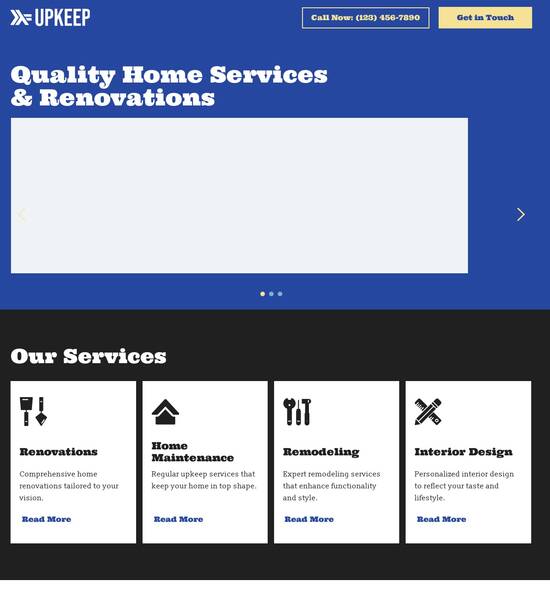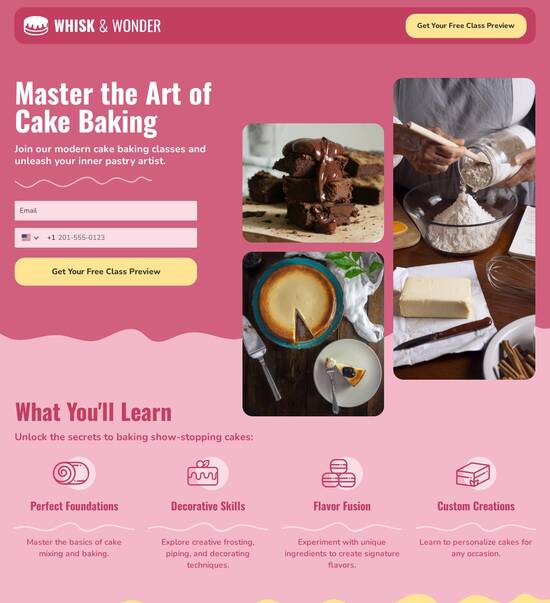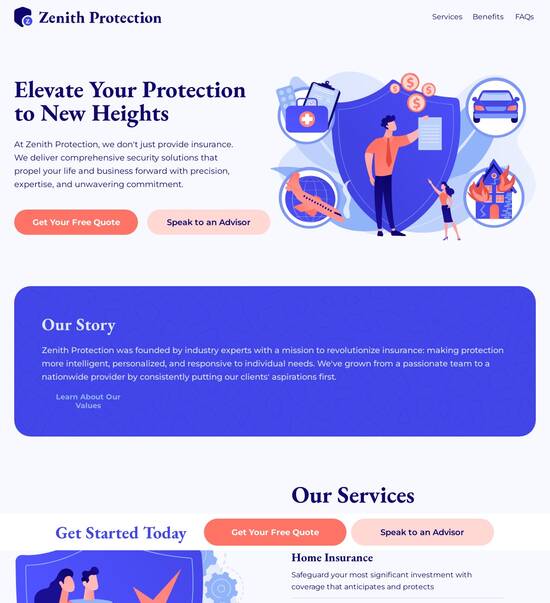
Light 404 error page template
Explore Similar TemplatesAbout template
Unleash your creativity with the light 404 error page template. Try Instapage today.
Recommended templates

Easy to build without coding
With the intuitive drag-and-drop builder, anyone on your team can create high-converting pages without any knowledge of code or design. Make enhancements to your landing page with custom widgets using Javascript, HTML/CSS, or third-party scripts.

Multiple layouts for any industry and goal
Select from 500+ landing page layouts built to boost conversions across industry-specific scenarios. Customize them by adjusting fonts, adding images, and generating on-brand content with the AI assistant. Quickly scale with Instablocks® and Global Blocks that you can save, reuse, and update globally.

Loads fast and looks polished on any device
Every template is responsive, which means they present professionally on any device and load blazingly fast with our Thor Render Engine. You can also power them up with Google AMP technology to deliver an unparalleled mobile experience and drive higher conversions.

Robust analytics & experimentation
Get real-time updates and reporting across all your devices, showing the number of visitors, conversions, cost-per-visitor, and cost-per-lead. Launch AI-powered experiments, run A/B tests, and use heatmaps to analyze user behavior, then optimize your landing page to maximize conversions.







Easy to build without coding
With the intuitive drag-and-drop builder, anyone on your team can create high-converting pages without any knowledge of code or design. Make enhancements to your landing page with custom widgets using Javascript, HTML/CSS, or third-party scripts.
Multiple layouts for any industry and goal
Select from 500+ landing page layouts built to boost conversions across industry-specific scenarios. Customize them by adjusting fonts, adding images, and generating on-brand content with the AI assistant. Quickly scale with Instablocks® and Global Blocks that you can save, reuse, and update globally.
Loads fast and looks polished on any device
Every template is responsive, which means they present professionally on any device and load blazingly fast with our Thor Render Engine.
Robust analytics & experimentation
Get real-time updates and reporting across all your devices, showing the number of visitors, conversions, cost-per-visitor, and cost-per-lead. Launch AI-powered experiments, run A/B tests, and use heatmaps to analyze user behavior, then optimize your landing page to maximize conversions.
All the features you need to build lead-generating landing pages
Explore more featuresLearn how to build top-performing landing pages for any goal
FAQs
Leading the way in building high-performing landing pages





An essential guide to optimizing your landing pages with Instapage
Optimizing landing pages is crucial for maximizing ROI on your digital marketing campaigns. Instapage provides marketers with the most powerful landing page and conversion rate optimization (CRO) tools available, enabling you to accelerate growth, scale efficiently, and enhance campaign execution regardless of your budget or team size.
Understanding the fundamentals of landing page optimization
Landing pages act as the first point of engagement for potential customers, making their optimization fundamental in driving conversions. With Instapage's extensive library of over 100 customizable templates and conversion-focused layouts, marketers can create pages that not only look appealing but also function effectively in capturing leads. Here’s why it matters:
- High-converting designs: Instapage's templates are tailored for conversion, ensuring that your landing pages engage visitors effectively.
- Faster page creation: No coding knowledge required. Instapage's user-friendly interface allows you to construct landing pages swiftly, freeing up time to focus on strategies.
- Built-in optimization tools: Utilize features like A/B testing and heatmaps, simplifying the process of identifying what works best for your audience.
Step 1: Building your landing page with Instapage
Creating a compelling landing page begins with selecting a pre-built template that fits your campaign goal. Here's a breakdown of the process:
- Choose a template: Instapage offers 100+ templates tailored for various industries.
- Customize with instinct: Use versatile design elements to adjust colors, fonts, and layout to match your brand.
- Incorporate lead generation elements: Add forms and call-to-action buttons that stand out and are easily accessible.
Step 2: Optimize for maximum conversions
After design, optimizing your landing page is the next crucial step. Here’s how to do that:
- Implement A/B testing: Create variations of your landing page and analyze which version performs better.
- Utilize heatmap technology: Understand visitor behavior to identify areas of improvement and focus on engaging sections.
- Track performance metrics: Use Instapage's analytics dashboard to continuously monitor and refine your campaigns.
Step 3: Personalization for distinct audiences
Personalization is vital to creating a unique experience for each user segment. Strategies to implement include:
- Dynamic text replacement: Adapt your messaging to reflect the source of the traffic.
- AdMaps: Align specific ads to tailored landing pages, ensuring a seamless experience from ad to landing page.
- Audience tracking: Analyze user metrics at a detailed level to understand preferences and improve targeting.
Implementing these steps can significantly enhance your landing page performance, driving higher engagement and conversions, crucial for business success.
Ready to take your landing page optimization to the next level? Start leveraging Instapage today to transform your digital marketing campaigns.
People also ask about Light 404 error page template
Understanding the light 404 error page template: A new standard for user experience
The importance of a well-designed 404 error page
A well-designed 404 error page is essential as it can significantly impact user retention and overall experience. When a user encounters a 404 error, their immediate reaction can often be frustration, leading to disengagement. It's crucial for businesses to recognize the emotional aspect of this moment, as a well-crafted error page can turn a disappointing experience into a memorable one, thereby reducing bounce rates.
Statistical insights reveal that almost 68% of online users will leave a website after encountering a problematic page like a 404 error. This not only affects traffic but can also hurt conversions. Thus, investing time in creating a light 404 error page template is more than just a task; it’s a pivotal part of your digital strategy.
Brand perception
A friendly error page is often reflective of the brand's image in the user's mind. Companies like Airbnb and Netflix have demonstrated that innovative 404 pages can become quirky extensions of their brand identities. By incorporating elements that align with their overall brand strategy, these companies have turned a negative experience into an opportunity for engagement.
Airbnb: Used humor and a clear navigation structure.
Netflix: Included recommendations and images from popular content.
Anatomy of a light 404 error page template
The anatomy of a light 404 error page template consists of various visual design elements that contribute to reducing user frustration. The use of soft colors and approachable typography can significantly create an inviting atmosphere, making users feel at ease despite encountering an error. Selecting appropriate imagery—perhaps whimsical or fun graphics—can also enhance the user experience.
Whitespace plays a crucial role; a cluttered page often heightens confusion. By allowing for adequate spacing around elements, users can digest the information presented without feeling overwhelmed. Therefore, a clean presentation is key to enhancing user satisfaction and promoting further navigation.
Clear messaging to inform users about the error.
Navigation options to steer users back to functional pages.
Search function integration to facilitate content discovery.
Crafting the content for optimal engagement
Crafting content for a light 404 error page goes beyond the visual aspects; it involves striking a balance in tone. Choosing a light-hearted approach can make the situation feel less frustrating, but it's crucial to maintain professionalism. There are moments where incorporating humor can enhance user experience, making the message more memorable.
Examples of effective messaging include playful phrases like 'Oops! Looks like you’ve hit a dead end. But no worries, here’s where you can go next!' Such language humanizes the experience, creating a friendly interaction.
Direct users to the home page for easy navigation.
Highlight popular content to encourage further exploration.
Integrate action buttons prominently to drive engagement.
Technical insights: Implementing the light 404 error page template
When implementing your light 404 error page template, choosing the right platform is essential. Custom error pages need to seamlessly integrate with existing website templates and be compatible with various plugins. It's often beneficial to work within a content management system that supports easy customization.
The installation process should be straightforward. Clear instructions and support options facilitate a smooth transition to incorporating the error page template across the site. Additionally, it is important to ensure that the functionality extends to mobile devices and different browsers, confirming an optimal user experience regardless of the platform.
Customize the template to align with your specific brand aesthetics.
Ensure visual consistency with the overall website theme.
A closer look at user behavior after encountering 404 errors
After users encounter a 404 error, understanding their behavior becomes essential to enhancing the website’s approach. Tracking engagement metrics can provide key insights into how users interact with the error page. For instance, monitoring how quickly users navigate away from the error page and whether they choose to engage with suggested options can be telling of the effectiveness of your template.
Utilizing analytics tools helps in identifying these key performance indicators. With data at your fingertips, you can make informed adjustments to optimize the error page further. This proactive approach is not just about fixing issues; it’s about refining the user journey continually.
Monitor bounce rates specific to error pages.
Analyze click-through rates on action buttons.
Gather user feedback for continuous improvement.
Innovating beyond the default: Advanced features of light 404 error page templates
To stand out even further, consider adding personalization elements to your light 404 error page template. Utilizing user data can allow you to craft tailored suggestions or messages based on prior user behavior. For example, returning visitors might appreciate seeing recently viewed content or acknowledging their earlier visit by referencing their activity.
Exploring how to integrate these advanced features with your marketing efforts can enhance user engagement. Linking the error page to ongoing campaigns, special offers, or social media channels can create a cohesive user experience, guiding users back into the funnel rather than letting them drift away.
Leverage user data for personalized messages.
Connect error pages to current marketing campaigns.
Enable social media links for broader engagement.
Best practices for designing your 404 error page template
Consistency is crucial when designing a 404 error page. Ensure that it aligns seamlessly with the site’s navigation, making it easy for users to return to main areas of the website. A thoughtfully designed error page doesn’t just provide information; it directs users calmly back into the site’s core offerings or encourages them to explore content.
Regularly testing your error page across different devices and browsers is also essential. Quality assurance processes can help ensure that users have a consistent experience, regardless of how they access your site. Small tweaks based on user feedback and technical observations can enhance the overall effectiveness of your error page.
Ensure coherent navigation back to main site areas.
Conduct regular testing for cross-browser compatibility.
Update the template regularly based on user metrics.
Case studies: Brands leading the way in 404 error page innovation
Examining standout light 404 error pages in the digital landscape provides valuable insights into effective design strategies. Brands such as GitHub and IKEA have taken their error pages to the next level, demonstrating how humor and utility can blend seamlessly. GitHub’s playful approach of browsing repositories while acknowledging the error encourages users to stay engaged.
Similarly, IKEA’s implementation showcases product suggestions and design inspiration, turning a misstep into a chance for additional marketing impact. By analyzing such innovative approaches, brands can glean important lessons about creativity and branding consistency, ultimately enhancing their user experience.
GitHub: Encouraged engagement through repository suggestions.
IKEA: Showcased products to redirect user interest.
Conclusion: Positioning your error page as a gateway, not a barrier
In summary, all 404 error pages should be viewed as opportunities rather than setbacks. By leveraging a light 404 error page template effectively, businesses can transform a potentially negative experience into a guided journey for their users. Providing clear navigation, friendly messaging, and functional features can create a seamless user experience.
Additionally, the emphasis on continual improvement and adaptation to user feedback will ensure that the error page evolves alongside users’ expectations. Regular updates and refinements will keep the page relevant and effective in meeting the needs of the audience.
Final thoughts on the future of error pages
Emerging trends indicate that error pages will continue to evolve, driven by technology and user behavior insights. As websites become more integrated with user data, dynamic content adjustments may become standard, making error pages not just informative, but also personalized spaces.
Moreover, the role of AI and automation is expected to grow, potentially allowing for real-time responses based on user behavior analytics. Brands that adapt and innovate in this area will likely stand out, positioning their error pages as tools that enhance user experience instead of barriers to content access.
Ready to skyrocket conversions?
Supercharge your ad campaigns with high-performing landing pages
Get started














